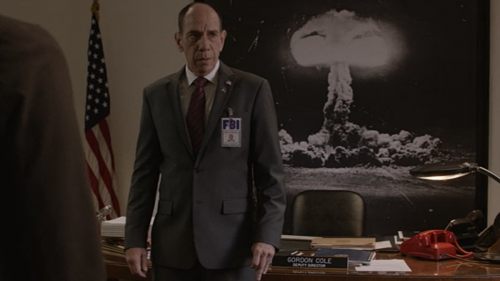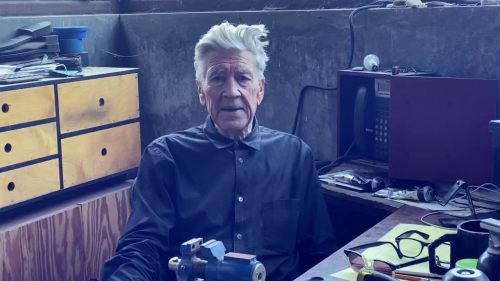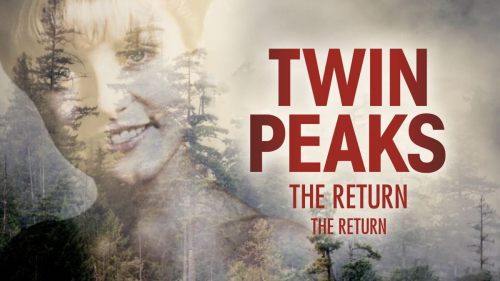TWIN PEAKS: THE RETURN: THE RETURN: “The Stars Turn And A Time Presents Itself”
TWIN PEAKS: THE RETURN: THE RETURN is an ongoing series at BMD. Every week, and in the order in which they aired, we're revisiting each episode from Showtime's TWIN PEAKS: THE RETURN with a revolving crew of writers. It's our attempt to recapture of bit of that Summer o' 2017 magic. Enjoy.
This is a cautionary tale and a promise fulfilled. "When you see me again, it won't be me," says the Arm, aka the dancing, red-suited Man From Another Place, in one of the last episodes in the original run of TWIN PEAKS. That dialogue would be "more true than you think" Lynch said, laughing, in a conversation with Rolling Stone just before the premiere of TWIN PEAKS: THE RETURN.
I laughed, too — loud and long — when the Arm appeared in THE RETURN's second episode, "The Stars Turn and a Time Presents Itself." The dancing red-suited dwarf had become something transplanted directly from one of Lynch's paintings. The original Dale Cooper, still trapped in the Black Lodge, is introduced to what the spirit Mike calls "the Evolution of the Arm," a tree of neural pathways topped with a cancerous ganglion, alive with electrical energy, waving in an ideated breeze like the skeletal sycamores when gusts blow through Glastonbury Grove.
The character, like the show around him, has truly become something else, while still remaining true to its nature. As the Giant said, one and the same. The story in TWIN PEAKS is indivisibly connected to its form. The Evolution of the Arm is the evolution of the series.
Which sounds quite artful — and truly is. But to put it another way, actor Michael J. Anderson made ridiculous demands and talked insane shit, and in response, Lynch and Frost turned him into a talking tree.
I won't go into details about the accusations Anderson lobbed at Lynch, because they are wholly unsubstantiated and totally insane. Anderson's comments about his salary demands, however, are fair game. "We told David at least a year in advance what we valued my participation to be," his now-deleted Facebook page said. Once Lynch and Showtime came to an agreement on the show's budget, "Lynch decides to use the funds from the budget increase to hire a bunch of famous, albeit unrelated, actors instead of me. Get it? THAT'S what happened. End of story."
In a way, Anderson wasn't exactly wrong when he complained that Lynch was offering too little money for the actor to reprise one of the most important roles in the series. His character only appears in Twin Peaks a few times, but those moments are pivotal. The early dream sequence which introduced Anderson's dancing character, and which first allowed us to see the true shape of Lynch and Frost's story, also became central to ABC's marketing of the show as something alluring and strange but not quite threatening.
In each subsequent appearance, Anderson's character became more overtly menacing. How much of that was a reaction to the character's poster-child status as the kooky side of ABC's pie-and-coffee series? How much of that was the series simply evolving into its final form? Is the Arm future, or is he past?
I went back to THE MISSING PIECES before writing this — that collection of deleted footage from FIRE WALK WITH ME and the original series, which I had not seen since it premiered at the Vista Theatre in Los Angeles in 2015 — and realized just how directly that footage prefigures THE RETURN in tone and style. In the first episodes of THE RETURN, Lynch's long, almost confrontational takes, combined with a distinct lack of the show's signature music, seemed jarring. But they're all right there in THE MISSING PIECES.
Going further back, each of the few episodes that Lynch directed — he only directed 6, including the pilot, in the first two seasons — pushes the show stylistically towards THE RETURN. Because his episodes delve into the Black Lodge, they also feature the most significant appearances from Anderson. And even there, the specific style of the show's third season is beginning to take form. It's a constant evolution in which the Arm happens to appear, but in which he is just as much an appendage as his name would suggest, rather than the main body.
One more thing. Originally I had thought about structuring this article around trust. Everyone seems to trust David Lynch. Everyone but Michael J. Anderson. Lynch's regular actors have an unusually deep well of faith in the director. Kyle MacLachlan is a grand example — even brief behind the scenes clips show him willing to risk looking ridiculous for Lynch — and he's not alone.
Trust is the underlying factor the makes any film production work. If an actor doesn't trust a director they might ignore direction altogether. (See: Many later Bruce Willis movies, especially COP OUT.) When a director doesn't trust an actor they fire them, cut around them, or paper over their work. (See: Terrence Malick, Richard Gere, and DAYS OF HEAVEN — although it seems like the distrust on that set was mutual.)
More than anything else outside of the shared work of David Lynch and Mark Frost, trust is the root of what makes TWIN PEAKS work. The series represents David Lynch trusting his instincts, following wherever his ideas lead no matter how tenuous the pathway seems to be, like Dale Cooper chasing clues by throwing rocks at bottles. Lynch trusts us to figure out the story, if not his own artistic motives, which is refreshing and ultimately powerful. That forms a bond between artist and audience that cannot be fabricated or faked. It is an authentic and meaningful relationship that is unaffected by time and distance.



